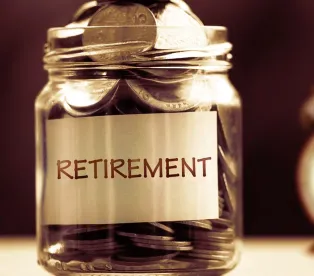Hardship withdrawals from 401(k) plans and 403(b) plans may be more accessible to some plan participants due to proposed regulations issued by the Treasury Department recently that incorporate provisions of the Bipartisan Budget Act of 2018 (BBA), the Tax Cuts and Jobs Act of 2017 (TCJA) and the Pension Protection Act of 2006 (PPA). These changes relax some of the rules currently applicable to hardship withdrawals.
What Changed?
Safe Harbor Hardship Withdrawal Provisions
401(k) plans and 403(b) plans may permit a participant to take a hardship withdrawal to satisfy an immediate and heavy financial need. Certain “safe harbor” requirements for hardship withdrawals are often included in plans to ensure that the withdrawal is due to hardship. Six “safe harbor” withdrawal expenses are deemed to be made on account of an immediate and heavy financial need.
The recent proposed regulations modify these particular safe harbor withdrawal expenses:
-
For a casualty loss related to damage to a principal residence, the safe harbor withdrawal expense is not limited to an expense that occurs in a federally declared disaster area, as previously required under the TCJA. The proposed regulations provide that this change may be applied retroactively to withdrawals made in 2018.
-
A new safe harbor withdrawal expense has been added relating to expenses incurred as a result of certain disasters in federally declared disaster areas in which an employee’s principal residence or place of employment is located, retroactive to Jan. 1, 2018. This change is an effort to eliminate any delay in access to funds under such circumstances.
-
Qualifying medical, educational or funeral expenses of a “primary beneficiary” under a plan are considered safe harbor withdrawal expenses as provided under the PPA and now reflected in the proposed regulations, effective as of Jan. 1, 2018.
The proposed regulations also modify the rules that apply for determining whether a “safe harbor” withdrawal is necessary to satisfy an immediate and heavy financial need.
-
The six-month suspension of elective deferrals and employee contributions following a hardship withdrawal must be eliminated for withdrawals made on or after Jan. 1, 2020, and may be eliminated as of the first day of the plan year beginning on or after Jan. 1, 2019. Plans may also be amended to lift the suspension on Jan. 1, 2019 for any hardship withdrawal made on or after July 1, 2018.
-
The requirement to take all available plan loans under employer-sponsored plans prior to obtaining a hardship withdrawal is eliminated as of Jan. 1, 2019, but may be retained at the election of the plan sponsor.
Additional Changes
-
The proposed regulations permit hardship withdrawals to be made from qualified nonelective contributions (QNECs), qualified matching contributions (QMACs) (including safe harbor matching contributions), and earnings on QNECs, QMACs and elective deferrals in 401(k) plans, effective January 1, 2019 or such later date, as desired by the plan sponsor.
-
The proposed regulations indicate that this change generally does not apply to 403(b) plans (with limited exceptions).
-
Effective Jan. 1, 2019, the proposed regulations eliminate the rule that the determination of whether a withdrawal is required to satisfy financial need is based on relevant facts and circumstances and instead provide a general standard for determining whether a withdrawal is necessary. The general standard is as follows:
-
The withdrawal may not exceed the amount required to satisfy the immediate and heavy financial need.
-
The employee must have exhausted all other distribution options available under all qualified and nonqualified plans of the employer.
-
The employee must represent in writing (including electronic writing) that the employee has insufficient cash to satisfy the need, and the plan sponsor must not have knowledge to the contrary. The representation requirement is not effective until Jan. 1, 2020 but may be implemented prior to such date.
-
What Should Plan Sponsors Do?
A plan sponsor should consider the following best practices for implementing the required and desired changes to the hardship withdrawal provisions in its plan:
-
Contact its service provider to discuss adopting the changes and updating the administrative manual accordingly.
-
This also may be an optimal time to:
-
Confirm that the terms of the plan document related to hardship withdrawals are consistent with administration.
-
Confirm that the service provider is maintaining the substantiation provided by a participant when a hardship withdrawal is granted so that it is available in the event of an audit.
-
-
Work with employee benefits counsel to amend the plan and the summary plan description to incorporate the changes.
-
The proposed regulations indicate that with respect to all of the changes to hardship withdrawals described above, the amendment deadline is the end of the second calendar year that begins after changes related to the proposed regulations appear on the IRS Required Amendments List.
-
-
Communicate the changes to plan participants with the assistance of the service provider and employee benefits counsel.




 />i
/>i
